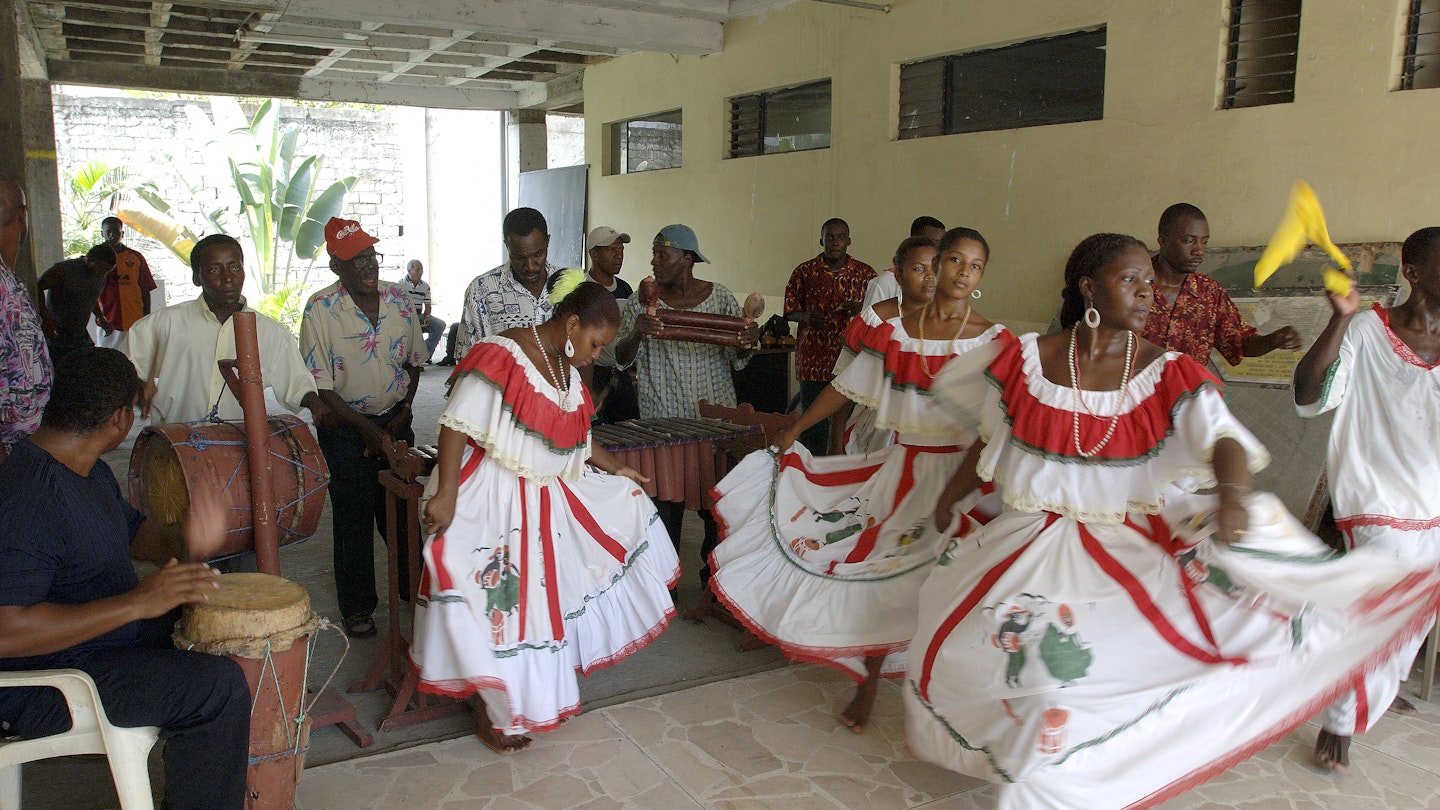Afro-Ecuadorians make up about seven to ten percent of the country’s population, but their impact on Ecuador’s food, music, and traditions is undeniable.
Systemic disadvantages have led to higher rates of poverty and crime, while insufficient infrastructure has kept many tourists from visiting regions with high Afro-Ecuadorian populations. However, things are slowly improving, thanks to grassroots campaigns that highlight a community pivotal to Ecuador’s history. Here are three places to explore Afro-Ecuadorian culture.
Esmeraldas
In 1533, 23 enslaved Africans escaped from a Spanish slave ship that capsized on the Pacific Coast, settling in the Esmeraldas province where they established a free community.
The area became a safe haven for enslaved Africans. While free Black colonies emerged in other regions, many of the original settlers remained for generations. Currently, the Esmeraldas province boasts a population that is 70% Afro-Ecuadorian, the highest concentration in the country.

“Esmeraldas is the capital of Black culture in the country,” explains Gabriel Brito, an Ecuadorian anthropologist associated with the Guayaquil-based NGO Cleotilde Guerrero Foundation. “This area is where enslaved Blacks established themselves and where the essence of Afro-Ecuadorian culture remains. Enslaved Africans found in Esmeraldas’ calm beaches and tropical weather an environment reminiscent of their homes and, combined with the unique features of their surroundings, formed a new culture now integral to Ecuadorian identity.”
Marimba Music
Marimba music, imported from West Africa, is the most popular genre emerging from the Esmeraldas region. This music is played on a palm-wood xylophone with bamboo tube resonators accompanied by drums and maracas. It serves as an integral part of daily life, acting as a form of oral history and community connection.
The small towns of San Lorenzo and Borbón are hubs for Afro-Ecuadorian marimba music. Borbón is home to Papá Roncón, a renowned Afro-Ecuadorian musician who elevated marimba music to an international genre. He founded La Catanga, a school dedicated to traditional culture where children learn to play and dance marimba.
For live marimba performances, many head to Las Palmas, a vibrant beach area in Esmeraldas with an exciting boardwalk. There, patrons will find an abundance of Afro-Ecuadorian restaurants. The Museum and Cultural Center of Esmeraldas offers a wealth of regional archaeology, shedding light on Indigenous and Afro-Ecuadorian history.
When to Go
An ideal time to visit Las Palmas is during the annual Carnaval celebrations, coinciding with the three-day International Afro Music and Dance Festival. Additionally, the Feast of the Virgin Carmen, the patron saint of sailors, celebrated on July 16, is widely observed throughout Esmeraldas. The first Sunday of October marks the National Day of Ecuadorian Blackness, celebrating freedom from Spanish enslavement.

Chota Valley
Simultaneously with the Esmeraldas shipwreck, Jesuit priests began bringing enslaved Africans into the Central Highlands for work on cotton and sugar plantations. The Chota Valley, located 1,500 meters (4921ft) above sea level in the Imbabura province, represents a unique blend of Indigenous Andean and Afro-Ecuadorian cultures.
The distinct Chota Valley Spanish (CVS), an Afro-Hispanic vernacular, is spoken in several rural villages throughout the Imbabura and Carchi provinces, with an estimated 12,000 speakers.
Bomba Music
The Chota Valley is recognized for its bomba music, which features greater Spanish and Indigenous influences compared to marimba. Bomba music varies from mid-tempo to fast rhythms, typically incorporating guitars, the Latin American percussion instrument guiro, and drums.
Variations of bomba music are performed by la banda mocha, a group of 12 Afro-Ecuadorian farmers who began creating music in the 1930s using everyday objects as instruments. Despite their lack of formal music education, they pass down their knowledge through generations. When a member passes, they are replaced by a descendant. These musicians enchant audiences throughout the Chota Valley without using electronic amplifiers or vocal accompaniment.
Tourism is becoming increasingly significant to the Chota Valley economy, with residents offering extended stays, workshops, performances, and recreational activities centered around Afro-Andean and Afro-Ecuadorian cultures to draw visitors. The “Doña Evita” Community Base for Tourism run by Iliana Carabalí is an excellent starting point for organizing trips.
When to Go
Carnaval is an exciting time to visit the Chota Valley, as celebrations take place across the Imbabura province.

Guayaquil
In Ecuador’s port city of Guayaquil, most of the Afro-Ecuadorian community resides in Isla Trinitaria, which is often regarded as one of the city’s most dangerous neighborhoods. Nevertheless, local Afro-Ecuadorians are actively working to revitalize the area through projects that provide creative outlets for at-risk youth.
One such initiative is Afromestizo Candente, founded 15 years ago by Jimmy Simisterra. It aims to divert young Afro-Ecuadorians from crime and violence by sharing aspects of Afro-Ecuadorian heritage and helping them develop artistic talents. Many members of Afromestizo Candente have moved past criminal backgrounds to become artists, hosting marimba performances and Black culture film festivals.
The Cultural Center Trinitaria, directed by the Fundación Cleotilde Guerrero, serves as a vital hub of Afro-Ecuadorian culture in the city, teaching children about Afro-Ecuadorian music and culture. A notable site in Isla Trinitaria is Trinibox, a boxing school that aids young residents in avoiding street life through boxing education.
Tourists interested in exploring this area are encouraged to do so with a local guide. Fortunately, a project called Africa Mía, run by Afro-Ecuadorian women in Isla Trinitaria, facilitates these experiences.
In downtown Guayaquil, restaurants like Corozo El Verdadero and El Panal del Marisco are fantastic choices for sampling authentic Afro-Ecuadorian cuisine.





